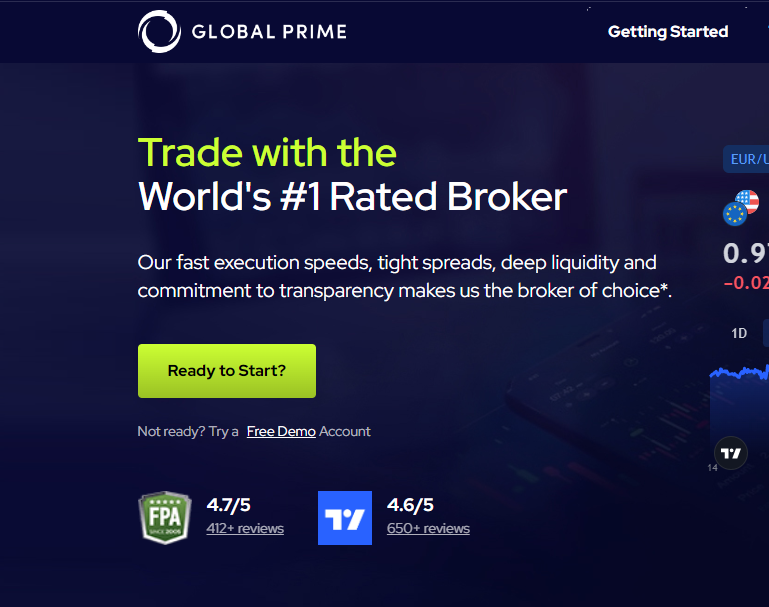Want to master Forex Trading?
In this blog post, we will delve into the fundamentals of Forex trading, exploring key concepts, strategies, currency pairs, tips and many things that can help you navigate this exciting market. Whether you’re interested in generating additional income, diversifying your investment portfolio, or simply gaining a deeper understanding of global economics, this post covers it all.
How Forex Trading Works (Explained to a 15-year-old)
Forex trading is the process of buying and selling currencies in the foreign exchange market with the aim of profiting from the changes in their exchange rates. It is one of the largest and most liquid financial markets in the world, where currencies are traded against each other in pairs.
For easy illustration, let’s consider an example of someone travelling from England to the USA and needing to convert their British Pounds (GBP) to US Dollars (USD). Imagine that John, a British traveller, is planning a trip to the United States. Before his departure, he needs to exchange his British Pounds for US Dollars to cover his expenses during the trip.
At the time of his departure, 1 British Pound is equivalent to 1.35 US Dollars. That means the GBP/USD rate is 1.3500
John decides to exchange 1000 GBP for USD. Using the exchange rate, he will receive:
1000 GBP * 1.3500 (GBP/USD exchange rate) = 1350 USD
Now John has 1350 US Dollars in hand, and he can use this money to cover his expenses while in the USA.
He enjoys his time in the USA and has 1350 USD left when he decides to convert it back to GBP. However, the exchange rate has changed, and now the GBP/USD rate is 1.4000. If John exchanges his 1350 USD back to GBP, he will get:
1350 USD / 1.4000 (GBP/USD exchange rate) ≈ 964.29 GBP
On his return trip, John got back 964.29 GBP, which is less than the 1000 GBP he started with (due to the change in exchange rates during his trip).
And this is a perfect illustration of how Forex trading works. Now let’s talk about currency pairs.
Currency Pairs
Meaning of Currency Pairs
In forex trading, currencies are always quoted in pairs, representing the relative value of one currency against another. For example, EUR/USD, GBP/USD, EUR/GBP, AUD/CAD, etc.
The currency pair consists of two parts: the base currency and the quote currency. The base currency comes first, and the quote currency comes second. The value of the currency pair represents how much of the quote currency is needed to buy one unit of the base currency.
And this is what we call the EXCHANGE RATE.
For example, in the currency pair EUR/USD, the EUR is the base currency, and the USD is the quote currency. If the exchange rate for EUR/USD is 1.2000, it means that 1 Euro is equivalent to 1.20 US Dollars.
Types of Currency Pairs
1. Major Currency Pairs: These pairs consist of the world’s most traded and widely recognized currencies. Major pairs typically involve the US Dollar as either the base or quote currency.
Examples include EUR/USD, GBP/USD, USD/JPY, and USD/CHF. These pairs tend to have high liquidity and are often favoured by traders due to the abundance of market information available for analysis.
2. Minor Currency Pairs (Cross Currency Pairs): Minor pairs do not include the US Dollar and are formed by pairing major currencies against each other. Examples include EUR/GBP, GBP/JPY, and AUD/CAD. Although they are less liquid and have wider spreads compared to major pairs, they can still offer trading opportunities.
3. Exotic Currency Pairs: Exotic pairs involve a major currency and the currency of an emerging or less economically developed country. These pairs are characterized by low liquidity, higher spreads, and greater volatility. Examples include USD/TRY (US Dollar vs. Turkish Lira), USD/ZAR (US Dollar vs. South African Rand), and EUR/TRY (Euro vs. Turkish Lira).
Factors Affecting the Prices of Currencies in the Forex Market
The value of a currency in the foreign exchange market can be influenced by a variety of factors. Some of the key factors that affect currency movements include:
1. Interest rates: Central banks’ decisions on interest rates have a significant impact on currency values. Higher interest rates tend to attract foreign investment, which increases demand for the currency and causes it to appreciate. On the other hand, lower interest rates may lead to a decrease in demand and a depreciation of the currency.
2. Inflation rates: Countries with lower inflation rates typically experience currency appreciation because their purchasing power increases compared to countries with higher inflation rates.
3. Economic indicators: Economic indicators such as GDP growth, employment data, trade balance, and consumer confidence can influence investor sentiment and, consequently, currency values.
4. Political stability: Political stability and the overall economic and political outlook of a country can impact its currency’s value. A stable and strong government is likely to attract foreign investment and promote confidence in the currency.
5. Trade balances: A country’s trade balance (exports minus imports) can affect its currency value. A trade surplus (more exports than imports) tends to strengthen the currency, while a trade deficit (more imports than exports) can lead to a weaker currency.
6. Speculation: Currency traders and investors may buy or sell currencies based on their expectations of future price movements, leading to short-term fluctuations in currency values.
7. Market sentiment: Currency markets are influenced by investor sentiment and perception of risk. Geopolitical events, global economic conditions, and other external factors can trigger shifts in market sentiment, affecting currency movements.
8. Central bank interventions: Sometimes, central banks may intervene in the foreign exchange market to influence their currency’s value. This can be done by buying or selling their own currency or through monetary policy measures.
9. Market liquidity and trading volumes: Currencies with higher trading volumes and liquidity are generally less volatile compared to currencies with lower volumes, which can lead to larger price swings.
10. Other currencies: Currency markets are highly interconnected, and the relative strength of one currency can also depend on the performance of other currencies in the market.
Where to Check Forex Data, Insights and Recent Happenings
Here are 10 popular websites where you can check or track forex market data. These websites provide real-time currency quotes, charts, economic calendars, news, and other essential information for forex traders.
3. Barchart.com
4. Bloomberg
5. Reuters
6. FXStreet
7. OANDA
8. TradingView
10. XE.com
11. DailyFX
Time Zones and Their Effect on Forex Trading
In this section, we’ll explain:
- The major forex trading sessions (Asian, European, and North American).
- How overlapping trading sessions impact market volatility.
- Strategies for trading in different time zones.
Major Forex Trading Sessions (Asian, European, and North American)
1. Asian Session: It is the least volatile session, with lower trading volumes compared to the other sessions. The Asian session starts with the opening of the Tokyo market. This session begins at 11 PM GMT and ends at 8 AM GMT.
It’s dominated by activity from Tokyo, Hong Kong, Singapore, and Sydney. The Japanese Yen is the most traded currency during this session.
2. European Session: The European session begins with the opening of major financial centres like London, Frankfurt, and Zurich. It is the most active session, with high liquidity and volatility.
This session starts at 7 AM GMT and ends at 4 PM GMT. It’s dominated by activity from London, Frankfurt, Paris, and Zurich. The Euro, British Pound, and Swiss Franc are the most traded currencies during this session.
3. North American Session: The North American session starts with the opening of New York. It overlaps with the end of the European session, resulting in increased trading activity and volatility.
This session begins at 1 PM GMT and ends at 10 PM GMT. It’s dominated by activity from New York, Chicago, and Toronto. The US Dollar and Canadian Dollar are the most traded currencies during this session.
How Overlapping Trading Sessions Impact Market Volatility
Overlapping trading sessions, especially the overlap between the European and North American sessions, tend to have higher market volatility. During these overlaps, there is a higher likelihood of significant price movements and increased trading opportunities.
The overlap between the European and North American sessions (from 1 PM to 4 PM GMT) is the most volatile period of the day due to the high volume of transactions. This is when liquidity is at its highest as traders from both continents are active, leading to faster execution of orders and tighter spreads.
Strategies for Trading in Different Time Zones
1. Asian Session Trading Strategy
– Focus on JPY-related currency pairs like USD/JPY or EUR/JPY.
– Look for short-term trading opportunities with tighter stop-loss and take-profit levels.
– Take advantage of smaller price movements due to lower volatility.
2. European Session Trading Strategy
– Trade major currency pairs involving the Euro (EUR/USD, EUR/GBP) and the British Pound (GBP/USD).
– Consider breakout strategies as volatility tends to increase during this session, especially during the overlap with the Asian session.
3. North American Session Trading Strategy
– Pay close attention to USD-related pairs like EUR/USD or GBP/USD.
– Focus on trend-following strategies or news trading, as major economic data releases and news events frequently occur during this session.
4. Overlapping Sessions Trading Strategy
– Take advantage of increased volatility and liquidity during overlapping sessions.
– Use range-trading or breakout strategies as price movements can be more pronounced during these times.
Tips to Be Successful in Forex Trading
1. Educate Yourself: Take the time to learn about forex trading, including fundamental and technical analysis, risk management, and trading strategies. Continuously educate yourself to stay updated with market trends and developments.
2. Develop a Trading Plan: Create a well-defined trading plan that outlines your goals, risk tolerance, and trading strategy. Stick to your plan and avoid impulsive decisions based on emotions.
3. Practice with a Demo Account: Before risking real money, practice trading with a demo account. This allows you to familiarize yourself with the trading platform, test different strategies, and gain experience without financial risk.
4. Start with a Small Account: When you transition to a live trading account, start with a small amount of capital that you can afford to lose. This helps manage risk and reduces the pressure of trading larger sums.
5. Use Risk Management Techniques: Implement proper risk management techniques, such as setting stop-loss orders to limit potential losses and using appropriate position sizing. Never risk more than a small percentage of your trading capital on a single trade.
6. Stay Disciplined: Stick to your trading plan and avoid making impulsive decisions based on emotions or market noise. Embrace a disciplined approach and avoid chasing losses or overtrading.
7. Keep a Trading Journal: Maintain a trading journal to record your trades, including entry and exit points, reasons for the trade, and lessons learned. Regularly review your journal to identify patterns, strengths, and areas for improvement.
8. Stay Informed: Stay updated with economic news, market events, and geopolitical developments that can impact currency prices. Economic calendars and news sources can help you stay informed.
9. Manage Your Emotions: Emotions can cloud judgment and lead to poor decision-making. Keep your emotions in check and avoid making impulsive trades based on fear or greed. Stick to your trading plan and strategy.
Continue Reading: How to Become a Better Trader in the Forex Market
Best Broker for Forex Trading
Choosing a good brokerage firm plays a vital role in the success of a trader in the financial markets. Traders shouldn’t choose any brokerage firm without ensuring intensive research before choosing one.
But do not worry. We have you covered. ChartsEmpire has reviewed the top brokers for Forex and CFDs trading in the financial markets, and HF Markets seems to be the best overall. We’re recommending HF Markets based on our 10 years of great trading experience with HF Markets because it’s suitable for both day traders and swing traders. Here are other outstanding features of this Forex broker:
- Competitive Trading Conditions
- 24/5 Reliable Customer Support
- Offers a Wide Range of Trading Tools
- Availability of Numerous Trading Instruments
- Availability of Multiple Trading Accounts
- Conventional Trading Platforms and Software
- Regulated, Safety and segregation of traders’ funds
- Recognition of Trust and Transparency







